After entering 2011, LED gradually entered the indoor lighting, which also means to start to enter the civilian family. On the one hand, this is a big joy, because the civilian market is very large; on the other hand, it is also a very serious challenge, because the civilian market requires particularly low cost and high reliability. It is still far from leaving the requirements to fully satisfy the civilian market. It can be said that there is still a long way to go.
The most common civilian lamps are incandescent lamps, which are our common bulbs. So if the LED is to replace the incandescent bulb, it is necessary to develop a bulb similar to an incandescent bulb, both in shape and shape. This is what we usually call LED bulbs. As you can imagine, the market for bulbs is huge.
One. The requirements for LED bulbs are due to the replacement of incandescent lamps, so at least the following requirements are required:
1. The brightness should be quite incandescent. Usually only wattage is spoken instead of lumens. Although the LED can only talk about the wattage, but because the LED light efficiency is still developing, only the wattage does not represent its lumens. The most common wattages for incandescent lamps are 15 watts, 30 watts, 45 watts, 60 watts, 75 watts, and 100 watts. If you want to talk about lumens, you can use the luminous efficiency of incandescent lamps to calculate. The luminous efficiency of incandescent lamps is 7.5-12 lm/W. The greater the wattage, the higher the efficiency. So the relative lumens of incandescent lamps listed above for several wattages can be listed as follows:
Incandescent lamp Watts W 15 30 45 60 75 100
Luminous efficiency lm/W 7.5 8 8.5 9.5 10.5 12
Lumens number lm 112.5 240 382.5 570 787.5 1200
LED1 wattage W 1.56 3.3 5.3 7.9 10.9 16.6
LED2 wattage W 1.2 2.6 4.1 6.1 8.4 12.8
If LEDs are used instead, the corresponding wattage can also be obtained. But because the luminous efficiency of LEDs is constantly rising, it is difficult to give accurate figures. Assume that the current usual LED1 has a luminous efficacy of 100 lm/W. If the LED 2 with the highest luminous efficacy is used, the luminous efficiency is 130 lm/W (the warm white light effect will be lower than this value). It is possible to derive the corresponding wattage for the two efficacy LEDs. However, because the LED requires a constant current source, and the constant current source has a certain efficiency, it is assumed to be 85%. In addition, since the LED cannot be used as a transparent bulb, only the milky white bulb can be used. Its light transmittance is about 85%. The multiplication is equal to 0.72. After considering the above factors, you can get the wattage equivalent to incandescent lamps. As can be seen from the table, LED2 can save about 10 times the power at the same brightness. There is one point that needs special explanation. From the current efficacy and heat dissipation of LED bulbs, it is impossible to achieve more than 10 watts, which means that there are only LED bulbs that can replace 60-75W incandescent lamps. Of course, PAR lights are another matter (discussed later).
2. The shape should be similar to the usual incandescent lamp, so the LED bulb should also be pear-shaped. This is very easy to do. However, incandescent lamps are all-glass products, and it is difficult to use an all-glass structure because LEDs are required to dissipate heat. The structure of the LED bulb will be discussed in detail below.
3. The size is quite the same, because the LED needs a constant current source and a heat sink, so this is very difficult to do.
4. The weight is equivalent, and because the LED requires a constant current source and a heat sink, this is also very difficult to do.
5. The lamp head should be the same. Most of China used the bayonet type in the past. After the reform and opening up, most of them used the same screw type as the United States. It is the American E26 or E27. This is still very easy to do.
6. To power the same, should be 220VAC (or the United States 110VAC), this is no problem <br> <br> II. Structure of LED Bulbs LED bulbs can be divided into external structures and internal structures. Let's first look at its external structure. The shape of a typical LED bulb is shown in Figure 1 (this is the most powerful LED bulb seen by the author at the Fry's electronics store in Silicon Valley, USA, for $40):
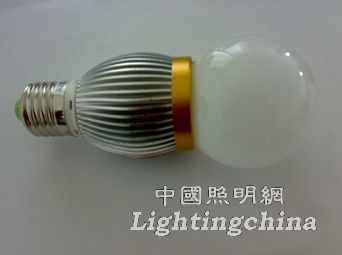

three. Bulb power supply
Because the bulbs are powered by the mains, the power supply must also be input from the mains. The English is called Off-Line. It is not appropriate to translate Chinese into offline, because the English original meaning is From Line. It should be translated into online, but it will be mixed with the online network, so it is better to call it the mains power supply.
The basic indicators of the mains power supply for bulbs are as follows:
1. Basic types of power supply: mainly divided into two types: isolated and non-isolated. That means whether the load end is isolated from the live line 220V. Generally speaking, non-isolation does not require an isolation transformer, so the cost is low, but the aluminum substrate is required to have a high withstand voltage, otherwise the heat sink may be charged. Therefore, it is not easy to pass the safety test. The isolation type is safer and easier to pass the safety regulations, but the cost is high.
2. Power output power: Because the size of the bulb must be comparable to that of an incandescent bulb, the size of the heat sink is limited and cannot exceed 9W.
3. Power efficiency: generally isolated at 80-85%, non-isolated at around 90%
4. Power factor (PF): no PF correction at 0.5-0.6, plus PF correction at around 0.9-0.99
5. Volume: Because the space left by the bulb to the power supply is small, the volume is very strict.
Here are a few typical bulb lamp power supplies.
3.1 Non-isolated power supply The following is a non-isolated power supply schematic using the US ON Semiconductor NCP1014 (Figure 3)
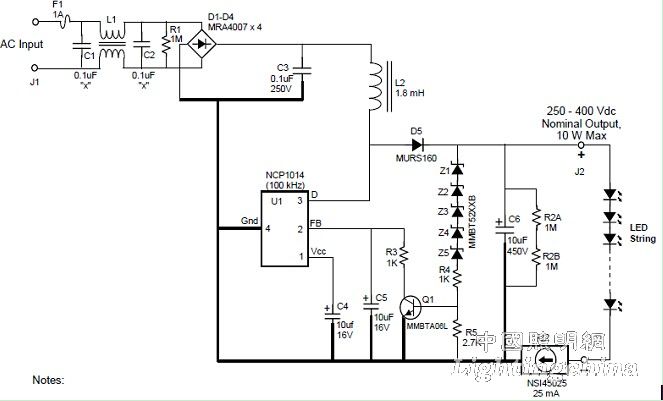 Figure 3. Schematic diagram of a non-isolated power supply
Figure 3. Schematic diagram of a non-isolated power supply
The basic indicators of this power supply are as follows:
Input voltage | Output Power | The output voltage | Output current | Number of LEDs | effectiveness | Power factor |
90-265VAC | 10W | 250-400VDC | 10-35mA | 75-120 | 80% | >0.9 |

Figure 4. Outline drawing of the NCP1014LEDGT
In fact, the core of this power supply is a constant current diode NSI45025 to ensure that the LED constant current is 25mA. So it can only be used for low power SMD LEDs. The added integrated circuit NCP1014 is actually an active power factor correction (PFC) that can increase its power factor to >0.9 to meet US Energy Star requirements. The inputs L1, C1, C2 are filters for EMI immunity. Its disadvantage is non-isolated, so 220V will be directly added to the load LED.
In fact, if the power factor is not required, then the power scheme using a constant current diode (CRD) can be done very simply (Figure 5).

Figure 5. The simplest bulb lamp power supply with constant current diode
The power factor of this power supply is between approximately 0.5 and 0.6. Because the circuit is simple, the volume can be made small and the cost is low.
3.2 isolated power supply
In order to improve safety, it is best to use an isolated power supply, which adds an isolation transformer, which increases the size, cost and efficiency. Figure 6 is a circuit diagram of a flyback isolated power supply using iWatt's iW3610. In fact, this chip is very similar to Cypress's CY8CLEDAC02.
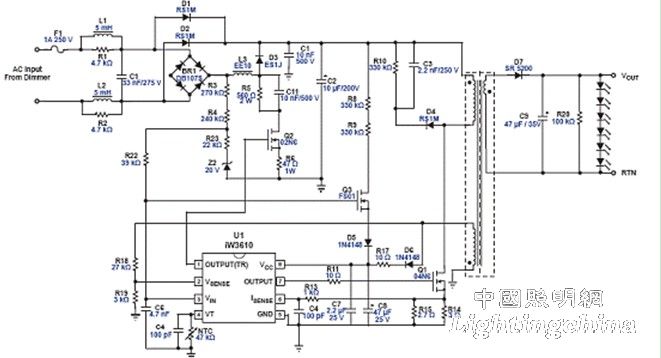
Figure 6. Circuit diagram of an isolated power supply using the iW3610
The main technical indicators are shown in the following table:
Input voltage | Output Power | The output voltage | Output current | Number of LEDs | effectiveness | Power factor |
100-230VAC | 14.7W | 21VDC | 700mA | 6x2W | 85% | 0.9 |
This circuit also automatically detects the presence or absence of a thyristor dimmer on the wall, dimming it if available, and its dimming range can be adjusted from 2% to 100%. Finally, PWM dimming is used, and the dimming frequency is up to 900 Hz, thus avoiding flicker. In addition, due to the use of quasi-resonant control, the total efficiency is as high as 85%. It also has a feature that uses the primary feedback of the transformer to eliminate the optocoupler. Its outline drawing is shown in Figure 7. Its shape is specially designed for bulbs.

Figure 7. Demo board for the iW3610
four. Bulb light radiator
The LED of the bulb is usually soldered to an aluminum substrate (LED backplane), which is then fixed to a circular aluminum heat sink, and then the aluminum heat sink is fixed to the heat sink housing (see Figure 8). .
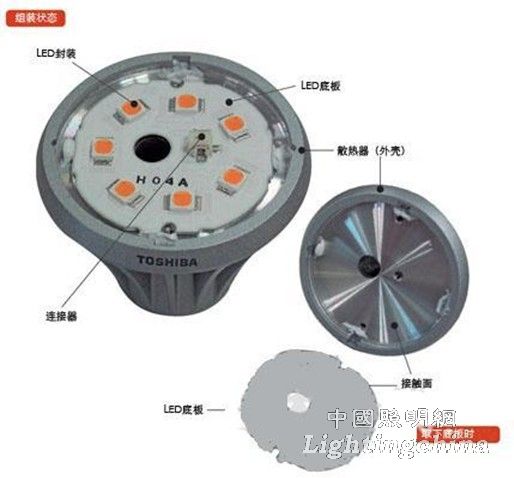
Figure 8. How to fix the LED backplane to the heat sink
The aluminum heat sink on the picture shows the traces of finishing. After finishing, the LED bottom plate can be directly fixed. Otherwise, there will be an air gap between the two, and silicon thermal conductive adhesive needs to be coated to improve heat conduction.
Bulbs are a big problem due to volume limitations. No matter which kind of radiator is used, it can only rely on convection and radiation to dissipate heat into the air, and both of these heat dissipation capabilities are proportional to the area of ​​heat dissipation. The heat dissipation area of ​​the bulb can be calculated as follows. It is assumed that its heat sink can be approximated by a cone with a truncated apex. It is assumed that the large cone has a height H and a diameter D, and the truncated small cone has a height h and a diameter d.

Figure 9 truncated cone
The side area of ​​the cone is πHD/2, so the side area after truncating a apex is πHD/2-πhd/2=π(HD-hd)/2. Assuming H = 8 cm, h = 3 cm, D = 5 cm, d = 3 cm, then the side area after this truncation is 48.7 cm2, which can be approximated to 50 cm2. Since most of the heat sinks are grooved to increase the heat dissipation area, the heat dissipation area added after the trench is increased by the groove depth g times the length l and multiplied by 2, and multiplied by the number of trenches. Assuming an average groove depth of 0.3 cm, a length of 5 cm, and a number of grooves of 46, the area increased after the groove is 0.3 x 5 x 2 x 46 = 138. cm 2 . The total heat dissipation area is 188 cm2. According to empirical data, the required heat dissipation area per watt is approximately 35-60 cm2. How much depends on the ambient temperature and the allowable temperature rise. Since most of the bulbs are used indoors and the ambient temperature is not very high, 35 cm2/W can be used. Therefore, the heat dissipation area of ​​188 cm2 can be about 5.3W. However, this is only a very rough estimate, and you can get an order of magnitude. The actual heat dissipation situation is still to be measured.
Japanese technology has disassembled several LED bulbs online. The shell temperature was measured and the results are shown in the following table: since the room temperature is the same,
Company name | Diligent 7.5W | Toshiba 7.2W | Samsung 7.1W | Zhen Mingli 7W | Kumho 6W | Philips 6W | BYD 4.8W | Samsung 4.7W | Star Comgistic 4W |
surface temperature | 43°C | 61 ° C | 47°C | 45 ° C | 48 ° C | 47°C | 45 ° C | 45 ° C | 38 ° C |
Emissivity | 0.64 | 0.37 | 0.6 | 1 | 0.94 | 0.96 | 0.96 | 0.97 | 0.71 |
Figure 10 Shell temperature of several bulbs
The bulb lamp power in the figure is from 7.5W to 4W. The lowest temperature rise is the 4W bulb with a case temperature of 38 degrees. The highest temperature rise is Toshiba's 7.2W bulb, which has a surface temperature of 61 degrees. This is because Toshiba's bulb lamp radiator does not have a groove. Therefore, the radiator that does not open the groove, although the surface is smooth and the shape is good, the heat dissipation effect will be much worse. The higher the surface temperature, the higher the junction temperature of the LED chip and the shorter the lifetime of the LED under the same system thermal resistance and power consumption.
Due to the limitation of the area of ​​the bulb heat sink, it is difficult to dissipate more than 7-9W. According to the current LED light effect, its lumens is equivalent to 60W incandescent lamps. With the improvement of LED light efficiency year by year, it is believed that there will be an incandescent lamp of the same size that can replace 100W.
The material of the radiator is mostly made of aluminum alloy because of its low cost, easy processing, and good thermal conductivity. However, a lot of insulated plastic heat sinks and ceramic heat sinks have appeared recently, and the heat dissipation effect is not bad. Because the final heat dissipation is mainly due to convection and radiation. Convection is entirely determined by its shape and area. Radiation is related to the radiation of the material. The thermal emissivity of various materials is shown in the following table:
material | steel | cast iron | stainless steel | aluminum | copper | Thermal plastic |
Polished without oxidation | 0.05 | 0.2 | 0.1- 0.25 | 0.02- 0.1 | 0.04-0.05 | 0.8-0.9 |
Rough oxidation | 0.5 | 0.5 | 0.2-0.4 | 0.4 | ||
Severe oxidation | 0.7- 0.95 | 0.8- 0.95 | 0.85 | 0.3-0.4 | 0.8 |
It can be seen from the table that oxidation treatment is an important way to improve the radiation heat dissipation of metal materials. Thermally conductive plastics can achieve extremely high emissivity without any oxidation treatment. Therefore, as long as its shape is the same as that of a metal heat sink, its convection and radiation effects are the same as those of a metal heat sink. However, its heat transfer performance is certainly not as good as that of metal, so the overall heat dissipation effect will be worse. But if you make it as thin as possible, plus a layer of metal inner wall, you can minimize this low heat conduction disadvantage. Plastics with a thermal conductivity greater than 20 w/mk are now available, but their unit price is relatively high. The case of a ceramic heat sink is the same as that of a plastic heat sink. Only the thermal conductivity can be made higher, of course, the cost is much higher. Figure 10 is a 6W plastic shell bulb of Shanghai Longmao Microelectronics. Its radiator temperature is 67 degrees.
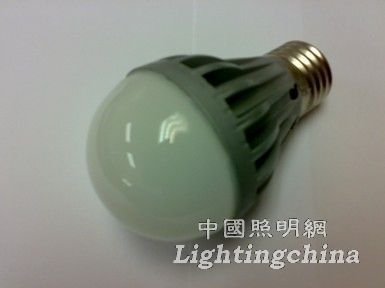
Figure 10 A 6W plastic radiator LED bulb
The biggest advantage of plastics and ceramics is insulation, so even with non-isolated power supplies it is easy to pass the safety test.
In addition, in order to improve the heat dissipation of the constant current driving power supply in the bulb, a thermal sealant is usually added to replace the air with poor heat conduction. Another method is to punch holes in the radiator for air circulation. But there will be problems with waterproofing.
Fives. The bulb of a bulb is called a bulb that is transparent in front. In incandescent lamps, all are made of glass, but in bulbs, although glass can also be used as the front casing, it is actually done. However, because the LED bulb is very heavy, it is more than 5 times heavier than the incandescent lamp. If it is made of glass, it will fall to the ground and the possibility of breaking is mostly. Therefore, more LED bulbs use plastic as a bulb to prevent damage. Moreover, since the LED bulb is dissipated from the heat sink because of the heat, the light passing through the bulb is mostly visible light, and there is little infrared rays generated by the heat, so that the plastic is used for the bulb to be damaged by overheating.
But the biggest problem with plastic housings is the problem of light transmission. Because LEDs have glare problems, use a milky white blister as much as possible to avoid seeing the LED beads inside. And the milky white blister. Its light transmittance is even more problematic. Therefore, there are the following requirements for plastics used in LED bulb bulbs:
1. It has high light transmission, high diffusion, no glare, no light and shadow;
2. The light source is concealed (it is impossible to see the LED lamp beads as much as possible);
3. The light transmittance is over 90%;
4. Has high flame retardancy;
5. Has high impact strength;
Nowadays, there is a kind of optical optical lampshade called Zhiguang LED that is said to meet all the above requirements (Fig. 11). 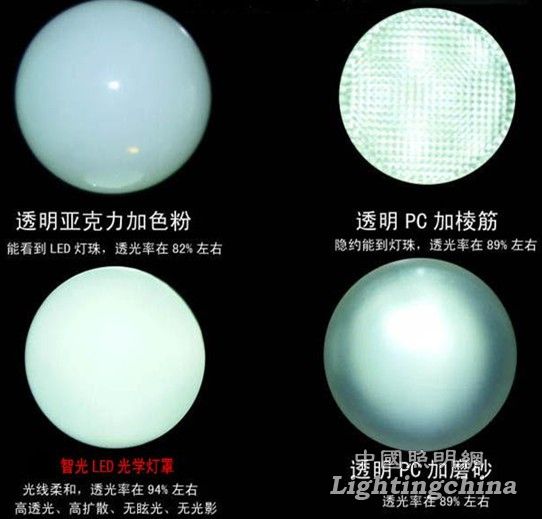
Figure 11 Various LED plastic blister
   If you can achieve 94% light transmittance, but also anti-glare, no light, then it is really ideal. The appearance is shown in Figure 12.

Figure 12 Appearance of the LED light shade
six. Several brands of LED bulbs are listed below. The measured results of several branded LED bulbs produced in the market.
the company | model | Voltage VAC | Input power W | Luminous lumens lm | Light effect lm/W | Rated life Ten thousand hours | Weight (without mask) |
Toshiba | 100 | 8.7W | 810 | 93 | |||
Toshiba | LDA7N | 100 | 7W | 600 | 83 | 40000 | 58 |
Toshiba | E-Core | 100 | 4.3W | 310 | 72 | ||
Matsushita | 100 | 6.9W | 570 | 82.6 | |||
Matsushita | 100 | 4.0W | 340 | 85 | |||
Sharp | 100 | 7.5W | 485 (daylight) | 64.6 | |||
380 (warm white) | 50.6 | ||||||
Samsung | 220 | 7W | 540 | 76 | 50000 | 140 | |
Samsung | 220 | 6W | 320 | 68 | 50000 | 134 | |
Kumho | IL-6W | 100-220 | 5W | 350 | 60 | 50000 | 152 |
Diligent | SLA1907 | 90-265 | 6W | 525 | 70 | 30000 | 145 |
Can Star Netcom | TSK-8E014W | 110 | 3W | 220 | 55 | 40000 | |
BYD | 100-250 | 4W | 210 | 44 | 40000 | ||
Zhen Mingli | 110 | 5W | 300 | 46.2 | 30000 | ||
Philips | ECOA55 | 220 | 6W | 240 | 40 | 45,000 | 114 |
It can be noticed that a 60W glass bulb incandescent lamp weighs only 28g. It is about 5 times lighter than these LED bulbs. In addition, the luminous efficiency in the table is not the luminous efficiency of the LED itself, but the luminous efficiency of the entire bulb, including the efficiency of the power source and the transmittance of the mask. Therefore, there is still a long way to go to achieve 100lm/W of overall light efficiency.
Seven. The LED PAR lamp PAR lamp is actually a specification for a high-power halogen lamp from Philips, which Philips calls "chloroammonium lamp". But the name has not been promoted. Generally referred to as "downlights" or "spotlights." The spotlights mainly refer to lamps with MR16 sockets, so we call them PAR lights or downlights for the time being. Because it is compatible with this PAR lamp, the high-power LED PAR lamp is also the same size as the PAR lamp. The structure is different, the wattage is different, and the brightness is different. The outline of Philips' PAR20, PAR30 and PAR38 is shown in Figure 13. The PAR lamps of compatible LEDs have the same dimensions as they do (Figure 14).
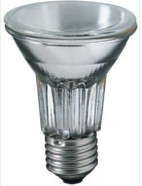 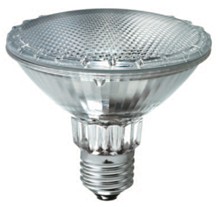 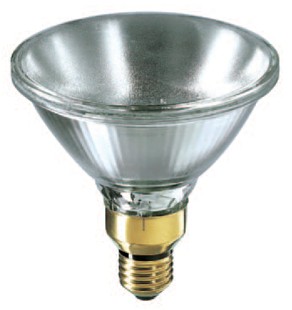 |
Figure 13. Outline drawing of Philips' PAR20, PAR30 and PAR38
 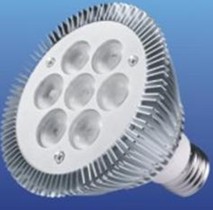 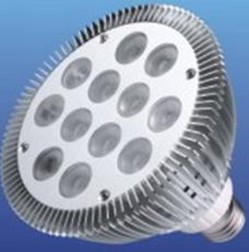 |
After adopting LED, since there is no uniform specification, it has various performance indexes. Now compare the indicators of the typical one with the original Philips halogen lamp as shown in the following table.
power | Voltage VAC | Angle of incidence (degrees) | Light intensity | Life (hours) | |
PAR20 | 50W | 230 | 25 | 1000cd | 2,000 |
LED PAR20 | 5x2W | 100-240 | 15,30,45,60,90 | 330 lm | >50,000 |
PAR30 | 100W | 230 | 30 | 3000 cd | 2,000 |
LED PAR30 | 7x2W | 100-240 | 8,15,30,45,60,90 | 680 lm | >50,000 |
PAR38 | 100W | 230 | 10,30 | 8500 (10o) 2500 (30o) | 2,000 |
LED PAR38 | 12x2W | 100-240 | 8,15,30,45,60,90 | 1,140 lm | >50,000 |
Among them, the unit of light intensity is different. Philips uses cd (candle), while LED usually uses lm (lumen). The relationship between the two is as follows: φ (lumen) = 4πI (candle). However, because the two sides have different solid angles, they cannot be converted. It can only be said that the halogen lamp has a luminous efficiency of about 17-33 lm/W. The luminous efficiency of LEDs is 100-130 lm/W. About 4-6 times higher than halogen lamps.
The structure of the PAR lamp and the bulb lamp are basically the same, but the volume is larger and the wattage is larger. Therefore, the required power supply is also larger.
In February of this year, the US company announced that it is an IC for LED constant current drive (LT3799), which can drive 4-100W LEDs, and it has PFC, external power MOSFET switch, and flyback isolation without Optocouplers minimize external components and can also be used for TRIAC dimming.
 Figure 15 Flyback Isolated Constant Current Power Supply for High Power LED PAR Lamps
Figure 15 Flyback Isolated Constant Current Power Supply for High Power LED PAR Lamps
This circuit diagram is a circuit diagram of a demo board for a 24 watt PAR lamp. The main technical indicators are as follows:
Input voltage | Output Power | The output voltage | Output current | Number of LEDs | effectiveness | Power factor |
90-270VAC | 25W | 25VDC | 1A | 8x3W | 83-86% | 0.92-0.99 |
The layout of its demo version is shown in Figure 16. Of course, it can also be designed to be circular in specific applications. 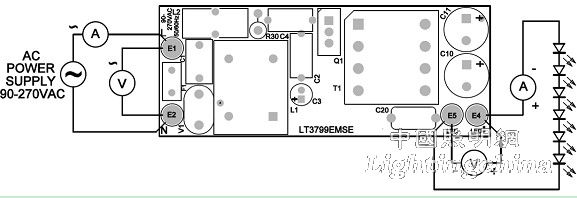 Figure 16. Demo version of the LT3799
Figure 16. Demo version of the LT3799
This mains constant current source can adapt to the wide power range of 4-100W because of its high power. Therefore, it must use an external MOS switch tube, and because of its high power, it requires power factor correction (PFC). For different powers, in addition to choosing different MOS tubes, it is also required to select transformers of different sizes. The transformer increases the volume and weight of the entire constant current source and reduces efficiency. But this is necessary to isolate the mains.
Eight. Market prospects for LED bulbs According to relevant estimates, LEDs will grow at a rate of more than 30% per year until 2014. If LED bulbs are to replace incandescent lamps, the global market size will reach 640 billion US dollars, and by December 2010, the sales of LED bulbs will be 20 million. Its market penetration rate is only 3.2%, and it is expected to reach 12.5% ​​by 2013. That is equivalent to $80 billion in sales. And its unit price will be declining at a rate of 15-20% per year. An LED bulb that replaces a 60W incandescent lamp sold for $90 in 2008 and only $40 in 2010.
China is a big country producing and using incandescent lamps. In 2009, it produced 3.79 billion incandescent lamps, about one-third of global production, and consumed 1.4 billion per year. But China has not yet set a date for prohibiting the production of incandescent lamps, but is only preparing to speed up the elimination of incandescent lamps by levying a consumption tax. However, it is only now ready to replace incandescent lamps with energy-saving lamps instead of LED bulbs. So although China has also produced a lot of LED bulbs, it is mainly for export. Only a small number of domestic sales are sold. The fundamental problem is that the price is too expensive. However, as the luminous efficiency of LEDs increases and the production cost decreases, LED bulbs will one day be able to completely replace incandescent lamps. Assuming that it takes 10 years to replace the incandescent lamps in China, we can roughly estimate the replacement process of LED bulbs in China during the past decade.
2011 | 2012 | 2013 | 2014 | 2015 | 2016 | 2017 | 2018 | 2019 | 2020 | |
Replacement rate | 0.5% | 1% | 3% | 8% | 15% | 30% | 50% | 70% | 90% | 100% |
Quantity | 7 million | 14 million | 42 million | 1.12 billion | 210 million | 420 million | 700 million | 9.8 billion | 1.26 billion | 1.4 billion |
unit price | $40 | $35 | $30 | $25 | $20 | $15 | $10 | $7 | $3 | $1 |
Total value | 280M | 0.49B | 1.2B | 2.8B | 4.2B | 6.3B | 7.0B | 6.86B | 3.78B | 1.4B |
*In RMB, the exchange rate is not good, so in US dollars
The highest luminous efficiency of LEDs is now about 140lm/W. It is expected that by 2020, the luminous efficacy of LEDs will increase to 240lm/W. This reduces power consumption and reduces heat sink size and weight. Thereby reducing the cost of the entire LED bulb. At that time, the era of LED bulbs replacing incandescent lamps will come!
BCH series AC Contactor is widely used for household electrical appliances control. Modular AC Contactor is used for remote control switch on and switch off the household electrical appliances which no inductance or with lower inductance loading. Such as electromagnetic oven, motors and other electrical appliances.
Modular AC Contactor mainly used in AC50Hz/60Hz,rated voltage to 400V,rated current of power system to 100A,AC-1,AC-7a (in no inductance or lower inductance load, resistance furnace, household appliances and similar lower inductance load) categories. Long distance switch and control circuit. House use AC Contactor is not used for breaking short circuit current, so it is necessary to choose suitable circuit protection electrical equipment for short circuit protection.
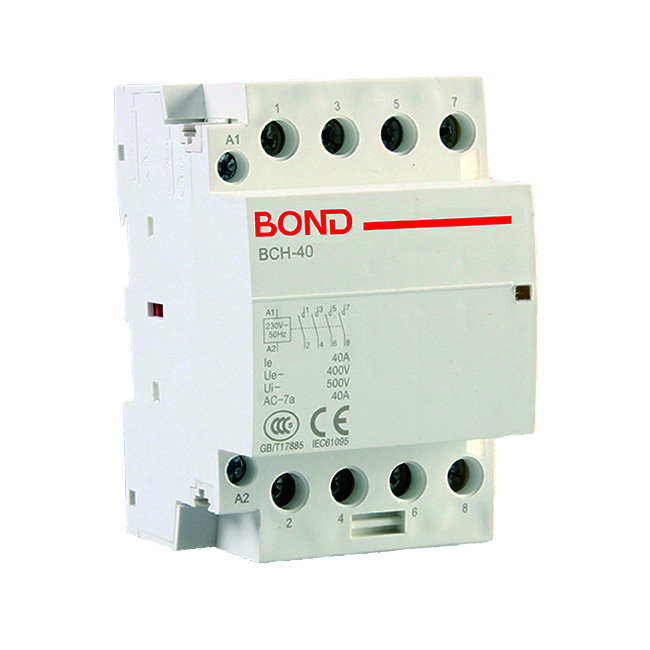
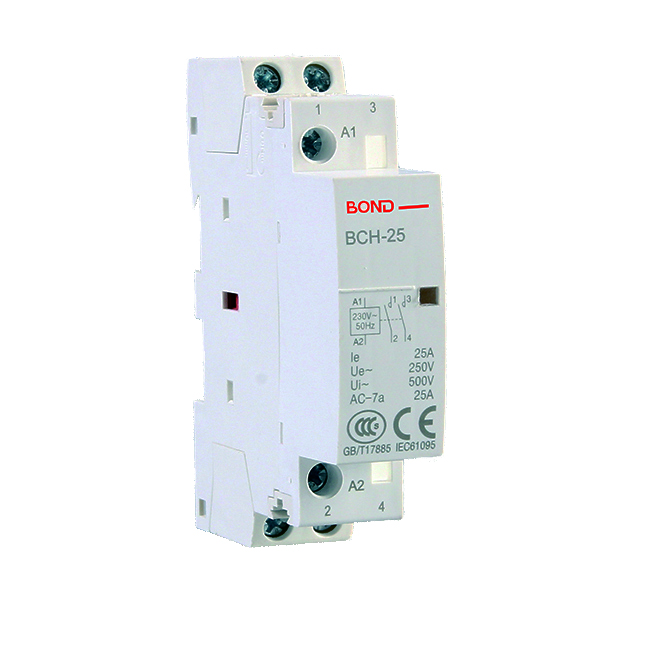
Modular AC Contactor
Modular AC Contactor,Modular Contactor,Auto Modular AC Contactor,Manual Modular AC Contactors
Ningbo Bond Industrial Electric Co., Ltd. , https://www.bondelectro.com